28 Feb Flat Tire Repair & Tire Maintenance in Ann Arbor, MI
 Did you know seven tire punctures occur every second across the United States, accounting for 220 million flat tires annually? Flat tires and blow-outs are estimated to cause over 400 deaths and more than 78,300 crashes yearly. Sounds crazy, right? What can you do to avoid becoming part of that statistic? Well, lucky for you, practicing routine tire maintenance in Ann Arbor, MI, and scheduling flat tire repair for a slow leak will help prevent unexpected blow-outs.
Did you know seven tire punctures occur every second across the United States, accounting for 220 million flat tires annually? Flat tires and blow-outs are estimated to cause over 400 deaths and more than 78,300 crashes yearly. Sounds crazy, right? What can you do to avoid becoming part of that statistic? Well, lucky for you, practicing routine tire maintenance in Ann Arbor, MI, and scheduling flat tire repair for a slow leak will help prevent unexpected blow-outs.
Flat Tire Types
Flat tires occur when air escapes from the tire. A flat tire cannot effectively or safely support a vehicle’s weight. Routine tire maintenance can help prevent most types of flat tires. As a motorist, you must check your vehicle’s tires for proper air pressure and overall condition. Unfortunately, some flat tires can occur without warning, even with perfect tire maintenance. Let’s review some common types of flat tires.
Blow-Outs
A blow-out is a sudden loss of air, often accompanied by a loud bang, which can be alarming. If you experience a tire blow-out, stay calm and carefully steer your car to a safe location (like a parking lot or shoulder). This type of flat tire is usually catastrophic and unrepairable. An emergency roadside assistance service (or yourself, if you have the skill) will have to remove the flat tire and install the spare. If you do not have a spare tire, call a tow truck to get your car someplace you can buy a replacement tire.
Faulty Valve Stem
The tire valve stem allows you to inflate (or deflate) the tire to adjust the air pressure. It contains two components: the valve stem core and the valve cap. The valve stem core is a spring-loaded mechanism that prevents the air inside the tire from escaping unless it is depressed. Fortunately, the valve cap prevents debris from damaging the valve, so purchase a replacement if you are missing a cap. If your tire leaks air from the valve stem, you must address the issue. The good news is that replacement valve stems are available for most tires.
Punctured Tire
A punctured tire happens when you drive over something sharp (like a nail, screw, or metal object) that penetrates your tire. Tire service technicians can usually repair damage like this, but there are a few exceptions:
- The hole is larger than 1/4″ in diameter
- The damaged area is located in the sidewall
- There are multiple punctures
- The tire is too old (manufacturers recommend replacing tires every 6-10 years)
Sidewall Damage
Tire sidewall damage is difficult to repair and often unsafe because the tire’s internal structure can be affected. Have a tire expert inspect the sidewall damage to see if they can repair it or if it requires a new tire. Common sidewall damages from hitting curbs, road debris, age & wear, and collisions include:
- Bubbles or bulges
- Cracks
- Deep scratches
- Exposed threads
Slow Leak
A slow leak can be tricky to find, but if you’re refilling your tire because it’s low, then chances are good you have one. Slow leaks are generally minor issues that a professional can repair.
Steel Belting Showing
When a tire shows its inner steel belting or wire bead, it’s either badly damaged or driven over its expected lifespan. That tire is unsafe in both cases because of the weakened internal structure.
Under-Inflation
Under-inflation occurs when too much air loss happens due to an unaddressed leak, change in ambient temperature or tire damage. Under-inflation affects performance and increases tire tread wear. Sometimes, the fix is to add more air until the pressure meets the recommended amount for your tire.
TPMS Dashboard Warning Light
If the TPMS light on your dashboard illuminates, but your tire pressure is fine, you may have a faulty sensor. Issues with a TPMS warning light usually require a sensor replacement or indicator reset.
Flat Tire Repair Options
When and where you experience a flat tire can dictate your repair options. For example, suppose you are traveling on a crowded highway or in the middle of nowhere. In that case, a temporary fix may safely get you to a repair shop. A permanent fix is a wiser choice if you are close to home and your favorite auto service center. Let’s review them one at a time.
Tire Patches & Plugs = Temporary Fix
A tire patch or plug is a temporary or short-term fix. It covers or fills the puncture and allows you to refill the tire with air. However, it is not a permanent solution. Tire patches and plugs should give you enough time to get your vehicle to a service station where they can permanently repair the issue.
Tire Sealants = Temporary Fix
Tire sealants usually come in a can and are a quick, easy, and inexpensive temporary flat tire fix. Simply follow the instructions on the can to apply the sealant. Tire sealants work in an emergency situation so that you can get your car to a repair shop. They are not long-term permanent solutions.
Combination Repair = Permanent Fix
According to two tire authorities, the National Highway Traffic Safety Administration (NHSTA) and the Tire Industry Association (TIA), the only proper method to repair a flat tire is to fill the void with a repair stem (or plug) and back it with a repair patch. This method is commonly called a ‘combination repair’ or a ‘patch/plug’ repair.
Auto technicians use a one-piece unit that combines the repair stem and patch into one piece. However, some circumstances may require a two-piece combination repair (like if the puncture angle exceeds 35 degrees). The patch/plug permanently bonds to the inside of the tire and through the void using a chemical-vulcanizing process. The repair basically becomes a permanent part of the tire, creating an air & moisture-proof seal.
Tire Replacement = Permanent Fix
The best solution for a severely damaged flat tire is replacing it with your full-size spare or a new tire. Tire replacement ensures the tire is whole, safe, and road-worthy. While a tire replacement can be an unexpected cost, remember that improving vehicle safety is a wise investment.
Can I Replace Just One Tire?
The ability to replace just one tire at a time depends on your vehicle. If you need to replace a drive-wheel (front-wheel drive or rear-wheel drive), you should buy two new tires since the different tire diameters may wear the transmission. If replacing a tire on the rear of a front-wheel drive car (or the front tire of a rear-wheel drive), you can replace just one. Always replace all four wheels simultaneously on an all-wheel drive or 4WD vehicle because different tire diameters can stress the differential and transmission.
Tire Maintenance & Service
An occasional flat tire happens to most of us and is simply a part of life. Ron’s Garage is pleased to provide tire maintenance and repair services in Ann Arbor, MI. In addition to flat tire repairs, we also offer the following tire maintenance services:
- Tire Balancing
- Tire Mounting
- Tire Rotation
- Wheel Alignment
- Tire Sales
We sell most major tire brands and have a wide range of styles and sizes for you to choose from to fit all vehicle makes and models. Our Road Hazard Warranty will set your mind at ease, knowing you can visit us for any tire-related problem for three years after your tire purchase. We can discuss your vehicle and driving style to help you choose the best tires for your needs.
Schedule Flat Tire Repair in Ann Arbor, MI
Call us at (734) 961-4701, visit us online, or drop by the shop to complete your flat tire repair today!
Ron’s Garage
1130 Rosewood St.
Ann Arbor, MI 48104

